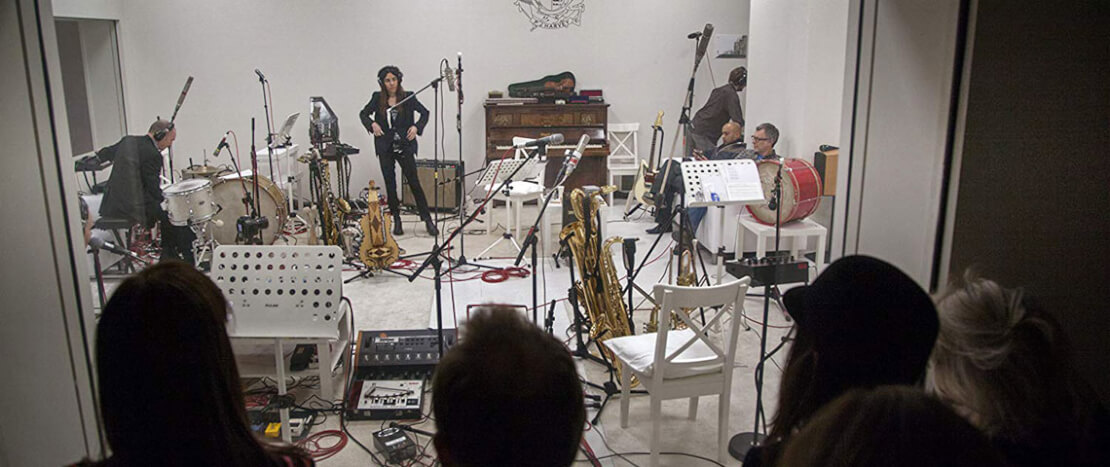A Dog Called Money
In a ‘Dog Called Money’ singer-songwriter PJ Harvey documents the inspirations behind her 2016 album ‘The Hope Six Demolition Project’. However, what emerges is an unwitting portrait of an artist whose latest offering has its roots in something far less wholesome…
… quickly becomes a laboured point with no discernible groove to follow.
Opening with the construction of a purpose-built studio in the basement of London’s Somerset House, we learn that the day-to-day recording is to be presented as a live art installation. Positioned inside a rectangular sound-proofed room, visitors can look in but the musicians can not look out.
Switching locations to Sarajevo and the desolate wreckage of the Bosnian war, PJ accompanies documentarian Seamus Murphy through a landscape etched by a bloody past. Tiptoeing through the wreckage of other people’s pasts, it quickly becomes apparent that both are on the hunt for inspiration in the guise of understanding.
Quickly moving onto America, Murphy’s lens trains itself on some young, black adolescents rapping on a street block. Whilst they obligingly rap into the proffered microphone, Harvey’s swamping narration begins to feel like a poetic filter serving its own frequency.
Blithely oblivious to the inference she’s creating, she unwittingly becomes a white saviour in an ashen ensemble. Notebook in hand, hers is documenting presence which invades the frame whenever Murphy’s camera pulls away. (One can only imagine what a more savvy, modern-day Gil Scott Heron would have said had they happened upon him during ‘Small Talk on 125th & Lenox‘).
Cutting back again to London and safely ensconced inside their sound-proofed fishbowl, their hauls of indigenous music lie scattered on the floor. And this becomes the repetitive refrain that ‘A Dog Called Money’ will not deviate from. First, play a song, then visit a purgatorial scene of plight and then cut back again to PJ’s white coloured studio with its matchingly coloured band.
As the spectators in Somerset House watch from their privileged vantage point, they are unaware that they are being read postcards from somebody else’s edge. As an occidental ambassador, Harvey forays become deliberate attempts to catch any falling sound that can be laboriously reproduced in her white echo chamber. Although the results are audibly reminiscent of her previous paramour, this is not ‘One More Time With Feeling‘, but a second-hand sense of guilt that PJ Harvey would like to introduce you to. Whether it’s harvesting the primal screams of a pentecostal preacher’s congregation or the beatific smiles of urchins in Murphy’s lens, everyone is just another palette to draw inspiration from.
So, with its refusal to stay by the side of any contextual narrative, ‘A Dog Called Money’ quickly becomes a laboured point with no discernible groove to follow. -Is all this worldly concern just vanity? -Is this love? Whilst it was possibly sincerely intended as the latter, the repetitive evidence of this collaboration inescapably drags you back to the former.
If unwitting self-sabotage had an accompanying video, then this is what it would look like.









